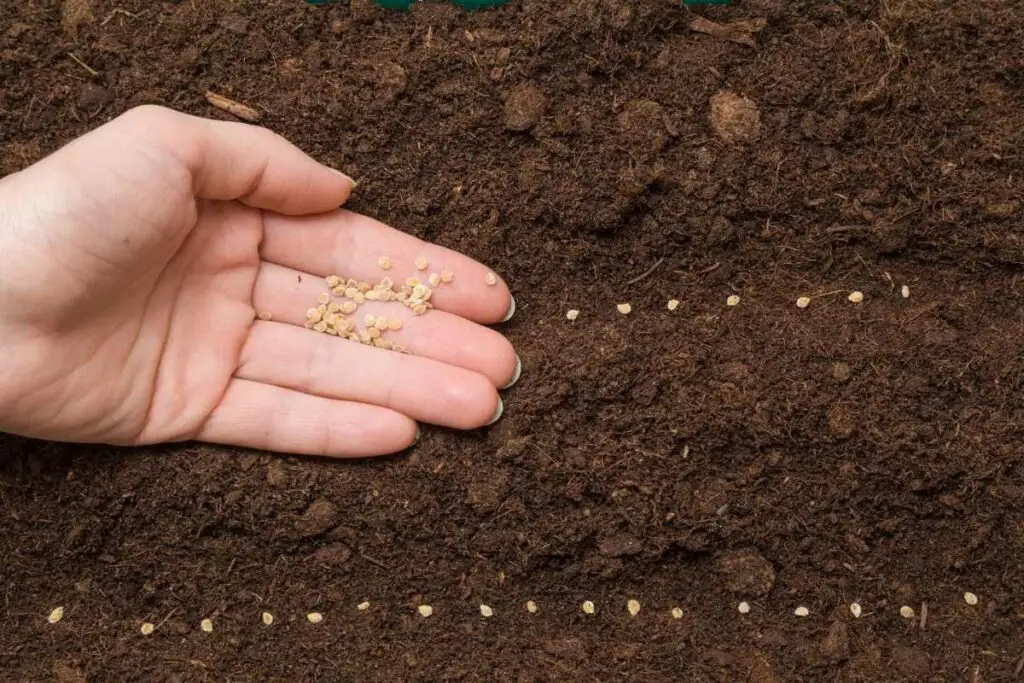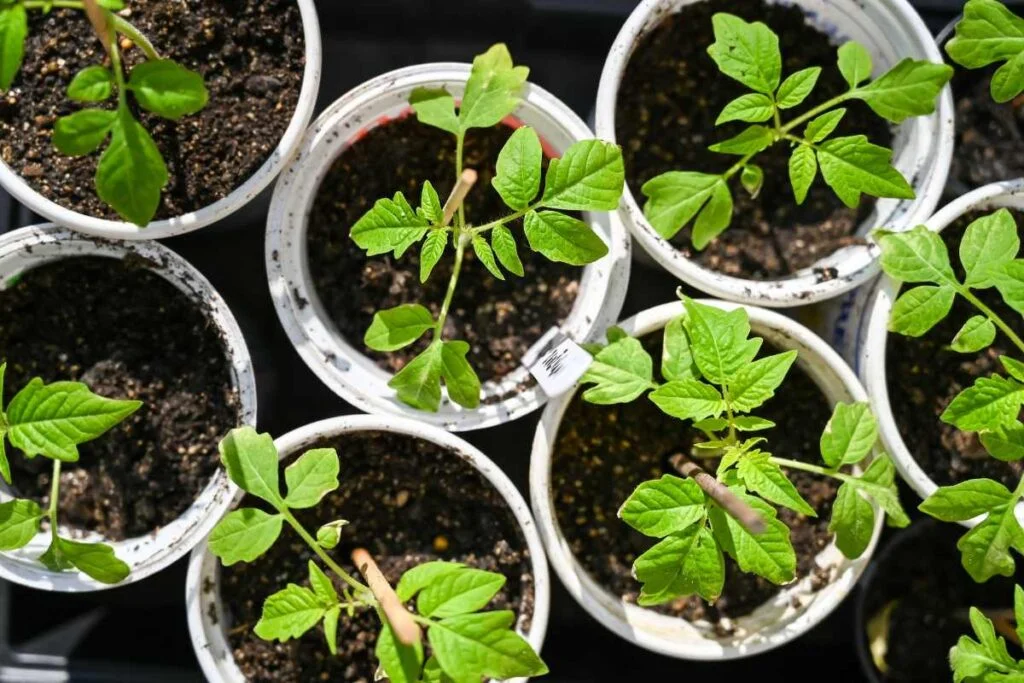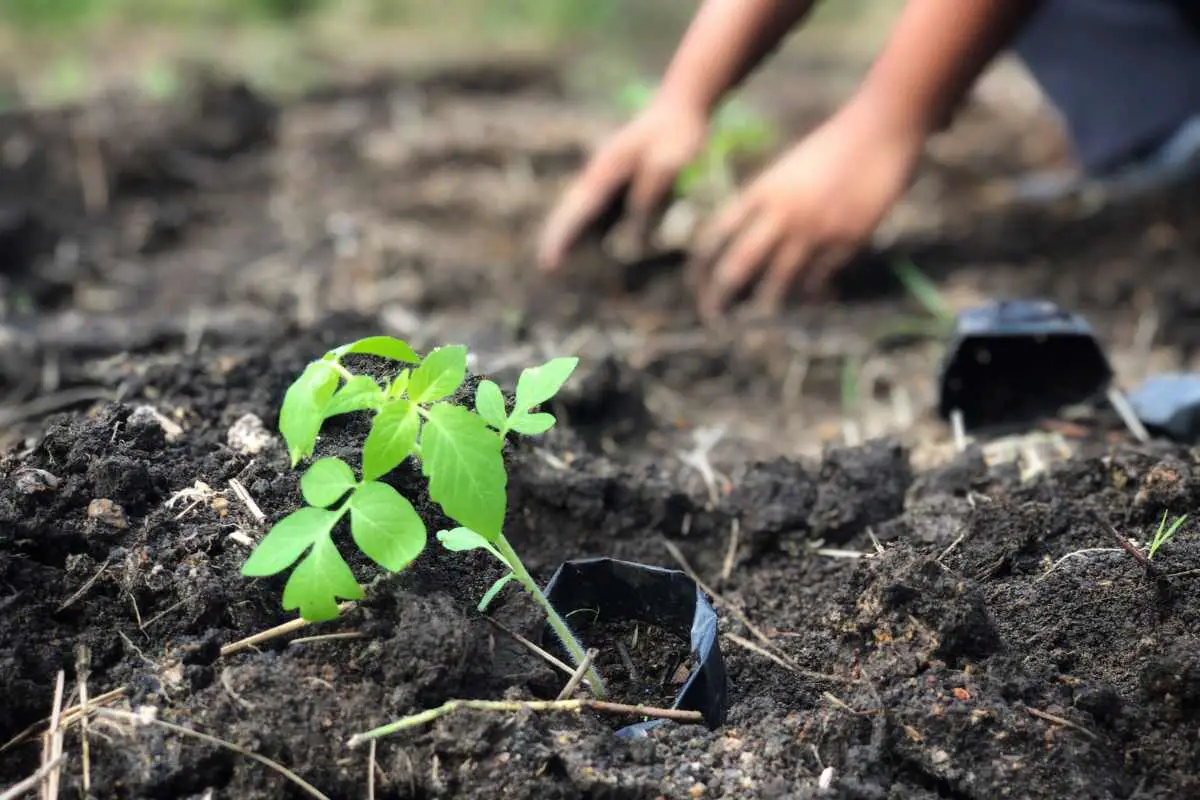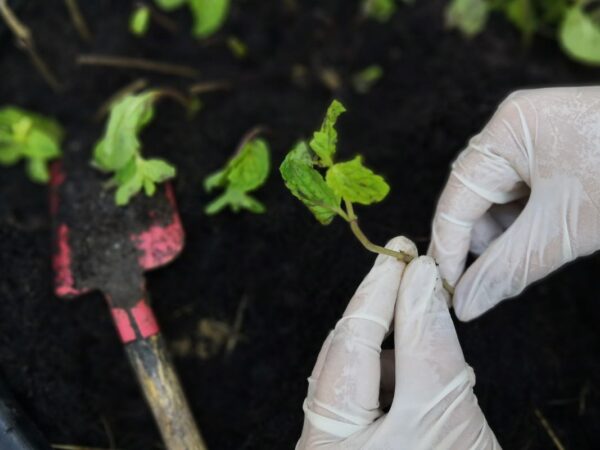Did you know that planting tomato seeds too deep can hinder germination and growth? Knowing how deep to plant tomato seeds is crucial for a successful harvest.
When it comes to planting tomato seeds, the general rule of thumb is to plant them 1/4 inch deep in well-draining soil. Planting them too deep can delay or prevent germination. By understanding the optimal depth for planting tomato seeds, you can ensure healthy seedlings ready for transplanting into your garden.
Discover the best practices for planting tomato seeds at the right depth and unlock the secrets to a bountiful tomato harvest this season. Stay tuned to learn more about maximizing your gardening efforts for thriving tomato plants.
Key Takeaways
- Planting Depth: Ensure you plant tomato seeds at the right depth, usually around 1/4 to 1/2 inch deep, to promote healthy seedling growth.
- Light and Moisture: Provide adequate light and moisture for your tomato seedlings to thrive, aiming for 6-8 hours of sunlight daily and consistent watering.
- Hardening Off Seedlings: Gradually expose your seedlings to outdoor conditions to strengthen them before transplanting, reducing the risk of shock.
- Essential Tools: Have essential tools like a seed tray, potting mix, and watering can ready for successful tomato seed starting and transplanting.
- Choosing Tomato Seeds: Select high-quality tomato seeds suited for your growing conditions and desired tomato variety for a successful harvest.
- Advanced Care: Monitor seedling growth, adjust watering based on plant needs, and provide support like stakes or cages as the tomatoes grow taller.
Choosing Tomato Seeds

Types of Seeds
When selecting tomato seeds, you can choose from various options like heirloom, hybrid, or open-pollinated varieties. Explore both determinate and indeterminate types for different growth habits.
Consider the diverse range of tomato seed varieties available in the market. Opt for heirloom seeds if you value traditional flavors or hybrids for disease resistance.
Selecting Wisely
Choose tomato seeds that align with your gardening goals and preferences. Ensure to pick seeds that are suitable for your specific climate, growing conditions, and plant.
Opt for disease-resistant tomato seed varieties to prevent common plant diseases and ensure a successful harvest. Selecting wisely is crucial for a thriving garden.
Season Length
Before planting tomato seeds, determine the length of your growing season. Choose early, mid, or late-season seed options based on your local climate, frost dates, and plant.
Factor in the days to maturity when selecting different tomato varieties. This information helps you plan and manage your garden effectively throughout the growing season.
Usage Plans
Plan how you intend to plant and use the tomatoes from your harvest. Decide whether you want them for fresh eating, canning, or making sauces based on your culinary preferences.
Consider the quantity of tomatoes you aim to produce when choosing tomato seeds. This decision impacts how many plants you need to grow to meet your usage plans.
Preparing for Planting

Sowing Timing
Timing is crucial when sowing tomato seeds. Begin indoors 6-8 weeks before the last frost date to ensure adequate growth before transplanting. Check the soil temperature to guarantee optimal conditions for plant germination.
Clean Containers
Use clean containers exclusively for planting tomato seeds to prevent contamination. Sterilize containers thoroughly to eliminate any potential diseases that could harm seedlings and plant. Ensure proper drainage in the containers to avoid waterlogging issues.
Quality Mix
Select a high-quality soilless potting mix specifically designed for starting tomato seeds. The mix should be well-draining, providing good aeration and moisture retention for healthy seedling development. Avoid using garden soil, as it may compact too tightly, hindering root growth.
Planting Depth
Optimal Depth
Plant tomato seeds at a depth of 1/4 to 1/2 inch in the soil for optimal growth. This depth ensures the seeds are adequately covered for germination. Adequate covering protects them from drying out or being eaten by birds.
When planting tomatoes, ensure the soil temperature is around 70-80°F for best results. Cooler temperatures can delay germination, affecting overall plant growth.
Seed Size
- Tomato seeds typically range from 1/16 to 1/4 inch in size.
- Small tomato seeds require gentle handling during planting to prevent damage.
- Larger tomato seeds may benefit from being planted slightly deeper for proper coverage.
Soil Type
- Choose well-draining and fertile soil to plant tomatoes effectively.
- Testing the soil pH is crucial to ensure it falls within the optimal range of 6.0 to 6.8.
- Proper soil conditions promote healthy root development and overall plant growth.
Seed Positioning
Position tomato seeds vertically in the soil at the recommended depth to plant and facilitate germination. Vertical orientation allows plant roots to grow downward, aiding in nutrient uptake.
Adequately spacing tomato seeds helps prevent overcrowding, allowing each plant enough space to thrive. Crowded plants compete for resources, leading to stunted growth and reduced yield potential.
Light and Moisture
Ample Light
Provide sufficient light for germinating tomato seeds. Place seed trays in a sunny spot or under grow lights. Ensure 12-16 hours of light daily.
Moisture Maintenance
Keep the soil consistently moist without being waterlogged. Water tomato seeds gently to prevent displacement. Use a spray bottle for delicate watering of seedlings.
Growth Environment
Air Circulation
To ensure optimal growth, good air circulation is essential for tomato seedlings. Adequate ventilation helps prevent damping off, a common fungal disease. Avoid overcrowding seedlings to allow for proper airflow, reducing the risk of diseases.
Feeding Seedlings
Once tomato seedlings develop true leaves, it's time to start feeding them. Use a diluted, balanced fertilizer to avoid burning the delicate plants. Feed the seedlings every 2-3 weeks to provide essential nutrients for healthy growth.
Advanced Care
Thinning Seedlings
Thinning out weaker tomato seedlings is essential to give space for the stronger ones to thrive. By removing excess seedlings, you prevent competition for nutrients among the plants. This process ultimately promotes robust growth in the remaining seedlings.
On the journey of nurturing your tomato plants, thinning plays a crucial role in ensuring optimal growth conditions. It allows the healthier seedlings to develop without being hindered by overcrowding. As you thin out the weaker ones, you're essentially prioritizing the vitality and vigor of your tomato plants.
Fertilizing
When it comes to fertilizing your tomato seedlings, applying a balanced fertilizer during transplantation is key. Opt for organic fertilizers as they support sustainable growth and are beneficial for the overall health of your plants. Following recommended dosages is vital to avoid over-fertilization, which can harm your tomatoes.
Fertilizing is a critical aspect of caring for your tomato plants, providing them with essential nutrients necessary for healthy development. The choice of using organic fertilizers aligns with environmentally friendly practices while ensuring that your tomatoes receive natural and wholesome nourishment. Remember, moderation in fertilization is key to preventing any adverse effects on your precious plants.
Hardening Off Seedlings
Gradual Exposure
To harden off tomato seedlings, gradually introduce them to outdoor conditions. Over 7-10 days, acclimate the seedlings to the external environment. Shield the plant from intense sunlight and strong winds throughout this process.
List:
- Protect from harsh sunlight
- Shield from strong wind
Ensure that tomato seedlings are not shocked by abrupt changes in temperature or light exposure. Gradually transitioning them to outdoor conditions promotes their resilience and enhances their chances of thriving when transplanted into the garden.
Transplanting Seedlings
Final Steps
Transplant tomato seedlings into the garden after hardening off. Proper spacing between plants is crucial for optimal growth. Water newly transplanted seedlings thoroughly to ensure they establish well.
Repotting Essentials
When repotting tomato seedlings, use larger containers as they grow to accommodate their roots. Containers with adequate drainage holes are essential for proper root health during repotting. Refresh the potting mix when repotting to provide essential nutrients for continued growth.
Essential Tools
Growing Necessities
Tomato plants, especially indeterminate varieties, require sturdy support as they grow taller to prevent bending or breaking. Install cages or stakes early on to avoid damaging the plants later. Regularly check your tomato plants for any signs of pests like aphids or diseases such as blight. Early detection can help prevent widespread damage and ensure healthy growth.
Consistent watering is crucial for tomato plants to thrive. Aim to maintain even soil moisture throughout the growing season. Water deeply but less frequently to encourage strong root development and prevent issues like blossom end rot. Proper watering also helps in nutrient uptake and overall plant health.
- Provide sturdy support for tall indeterminate tomato varieties
- Monitor plants regularly for pests and diseases
- Maintain even soil moisture through consistent watering
Summary
In choosing tomato seeds, preparing for planting, determining the right depth, ensuring proper light and moisture, creating an ideal growth environment, providing advanced care, hardening off seedlings, transplanting them, and using essential tools, you've equipped yourself with the knowledge to grow thriving tomato plants. By following these steps diligently, you set the stage for a successful tomato gardening experience. Remember to monitor your plants regularly, adjust care as needed, and enjoy the rewarding journey of nurturing your own homegrown tomatoes.
Now that you have all the tools and know-how at your disposal, it's time to get your hands dirty and start planting those tomato seeds. Put your newfound knowledge into action and watch as your garden flourishes with healthy tomato plants. Share your successes and challenges with fellow gardening enthusiasts to keep learning and growing together.
Frequently Asked Questions
How deep should I plant tomato seeds?
Plant tomato seeds about 1/4 inch deep in soil. Ensure the soil is well-draining and kept consistently moist for germination.
Special requests
- Use a ruler or your finger to gauge depth accurately.
- Maintain consistent moisture levels for optimal seed germination.
When should I start hardening off tomato seedlings?
Begin hardening off tomato seedlings about one to two weeks before transplanting outdoors. Gradually expose them to outdoor conditions like sun and wind.
Special requests
- Start with short exposure periods and gradually increase.
- Protect seedlings from extreme weather during this process.
What tools are essential for planting tomato seeds?
Essential tools for planting tomato seeds include pots or trays, high-quality potting mix, labels for identification, watering can or spray bottle, and a light source for germination.
Special requests
- Ensure tools are clean and in good condition.
- Label each tray or pot to avoid confusion during growth stages.
Image Source: Paid image from CANVA



